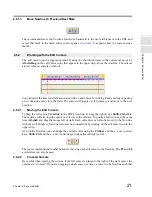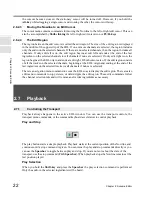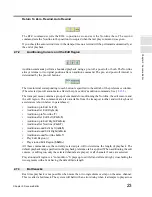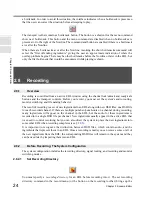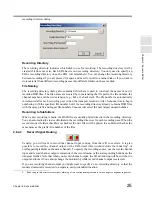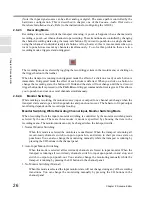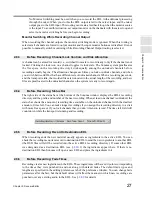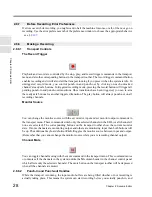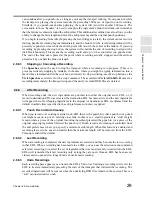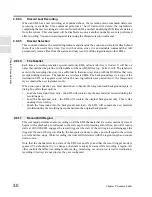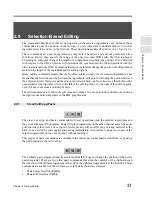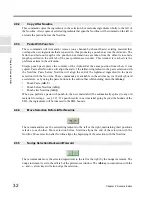
C
hap
te
r 2:
So
no
m
a
Edi
tor
Chapter 2: Sonoma Editor
29
can continue after you punch-out, as long as you keep the transport running. If you punch-in while
the transport is playing, the system includes the preceding 200 msec. of input in your recording.
Similarly, if you punch-out and keep playing, the system will record for another 200 msecs. The
extra audio in these “handles” is used to complete the ingredient’s fade-in and fade-out (remember
that the fades are centered around the edit points). This additional recording time also allows you the
ability to change the fade length and move the edit points beyond the original punch positions.
If you begin recording from idle (by pressing the record trigger to start), the system cannot record a
starting handle. Recording begins immediately and the fade-in for the recorded ingredient will be
precisely at punch-in time, while the edit-in point will occur in the center of the fade-in. If you stop
recording by pressing the stop button, the system will schedule the end of recording to align with a
disk block boundary. This means the recording could end up to 3/4 second after you punched out.
The end of the fade-out is placed at the point where recording actually stopped, and the edit-out
precedes it by one half the fade-out length.
2.8.8.3
Stopping or Canceling a Recording
The
Spacebar
cannot be used to stop the transport while a recording is in progress. (This is to
prevent accidently stopping by mistake, in the case where you might be typing information into a
mark whose information field has not been activated.) To stop recording, use the stop button or the
Ctrl+Spacebar
accelerator for the stop command. The accelerator
Ctrl+Alt+Shift+R
cancels a
recording immediately: the transport stops and the newly recorded DSD files are deleted.
When recording ends, the new ingredients are punched into either the original active EDL, or, if
record to destination EDL was selected, the destination EDL becomes active and the new ingredients
will appear there. Overlapping ingredients in the original (or destination) EDL are trimmed and the
default crossfade time (specified in the edit preferences window) is applied.
2.8.9.1
Punch Record Auto Cleanup
When you record over existing material in an EDL there is the possibility that a punch in or punch
out might occur on top of an existing cross fade. In this case, a small ingredient (a “stub”) might
remain where a piece of the original incoming ingredient preceded the punch in (or a piece of the
original outgoing ingredient followed the punch out). Punch record auto cleanup is controlled from
the edit preferences where you specify a minimum stub length. When this feature is enabled and
recording leaves stubs, any stub smaller than the minimum length will be removed from the EDL.
Cleanup is enabled by default.
2.8.9.2
Last Recording
When a recording is completed, the new ingredients are selected and they become the
last recording
in that EDL. When a recording has been made in an EDL, you can use the selection menu command
select last recording to re-select the set of ingredients that was most recently recorded into the EDL.
EDLs will remember their last recording only as long they are open. Once an EDL has been saved,
closed, and re-opened it no longer knows about its last recording.
2.8.9.3
Undo Recordings
Each recording pass appears as an item in the EDL’s Undo list. Undoing a recording will revert the
EDL to its state immediately preceding the start of the transport that initiated the recording. The
recorded ingredients will be removed but the underlying DSD files remain in the system. This is a
“soft” or non-destructive undo.
2.8.9
After Recording
Содержание SONOMA
Страница 12: ...Sonoma Audio Workstation User Guide Copyright 2003 Sony Corporation of America All rights reserved ...
Страница 18: ...Sonoma Audio Workstation User Guide xvi ...
Страница 22: ...4 Chapter 1 Introduction Chapter 1 Introduction ...
Страница 90: ...72 Chapter 2 Sonoma Editor Chapter 2 Sonoma Editor ...
Страница 120: ...102 Chapter 3 Sonoma Mixer Chapter 3 Sonoma Mixer ...







